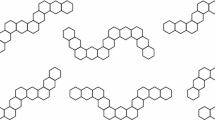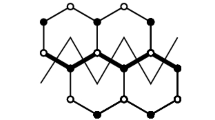Abstract
A simple algorithm is developed which allows to decide whether or not a given hexagonal system has a perfect matching (and to find such a matching). This decision is also of chemical relevance since a hexagonal system is the skeleton of a benzenoid hydrocarbon molecule if and only if it has a perfect matching.
Similar content being viewed by others
References
F. Harary, The cell growth problem and its attempted solutions,Beiträge zur Graphentheorie (Int. Koll. Manebach, 9–12. Mai 1967), ed. H. Sachs, H.—J. Voss, and H. Walther. B. G. Teubner Verlagsgesellschaft Leipzig 1968, 49–60.
J. E. Hopcroft andR. M. Karp, An 5/2 algorithm for maximum matchings in bipartite graphs,SIAM J. Comput. 2 (1973) 225–231.
E. L. Lawler,Combinatorial Optimization: Networks and Matroids, Holt, Rinehart and Winston, New York, 1976.
Author information
Authors and Affiliations
Additional information
Dedicated to Paul Erdős on his seventieth birthday
Rights and permissions
About this article
Cite this article
Sachs, H. Perfect matchings in hexagonal systems. Combinatorica 4, 89–99 (1984). https://doi.org/10.1007/BF02579161
Received:
Issue Date:
DOI: https://doi.org/10.1007/BF02579161




